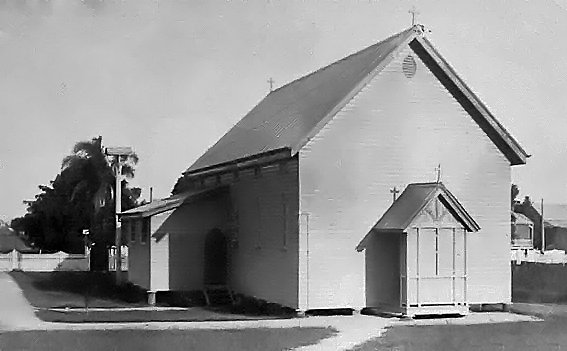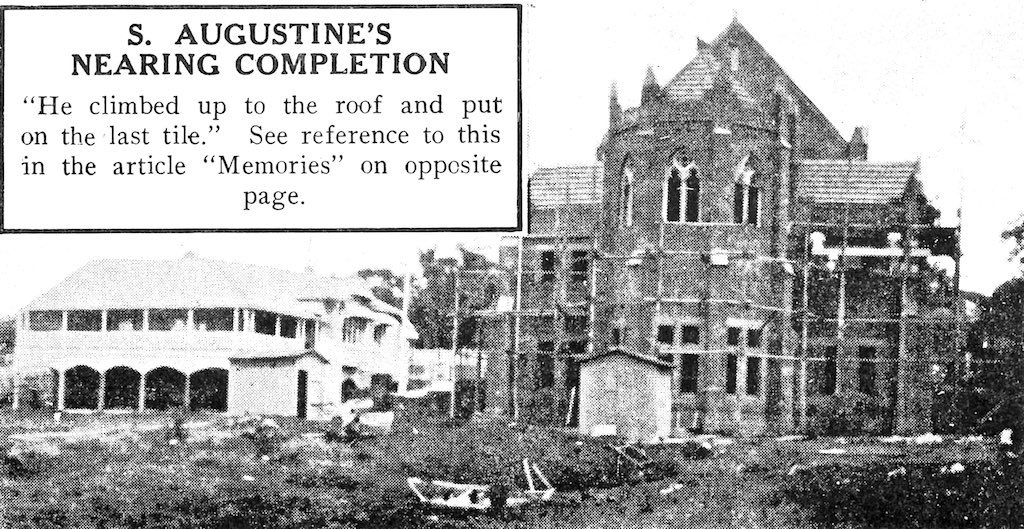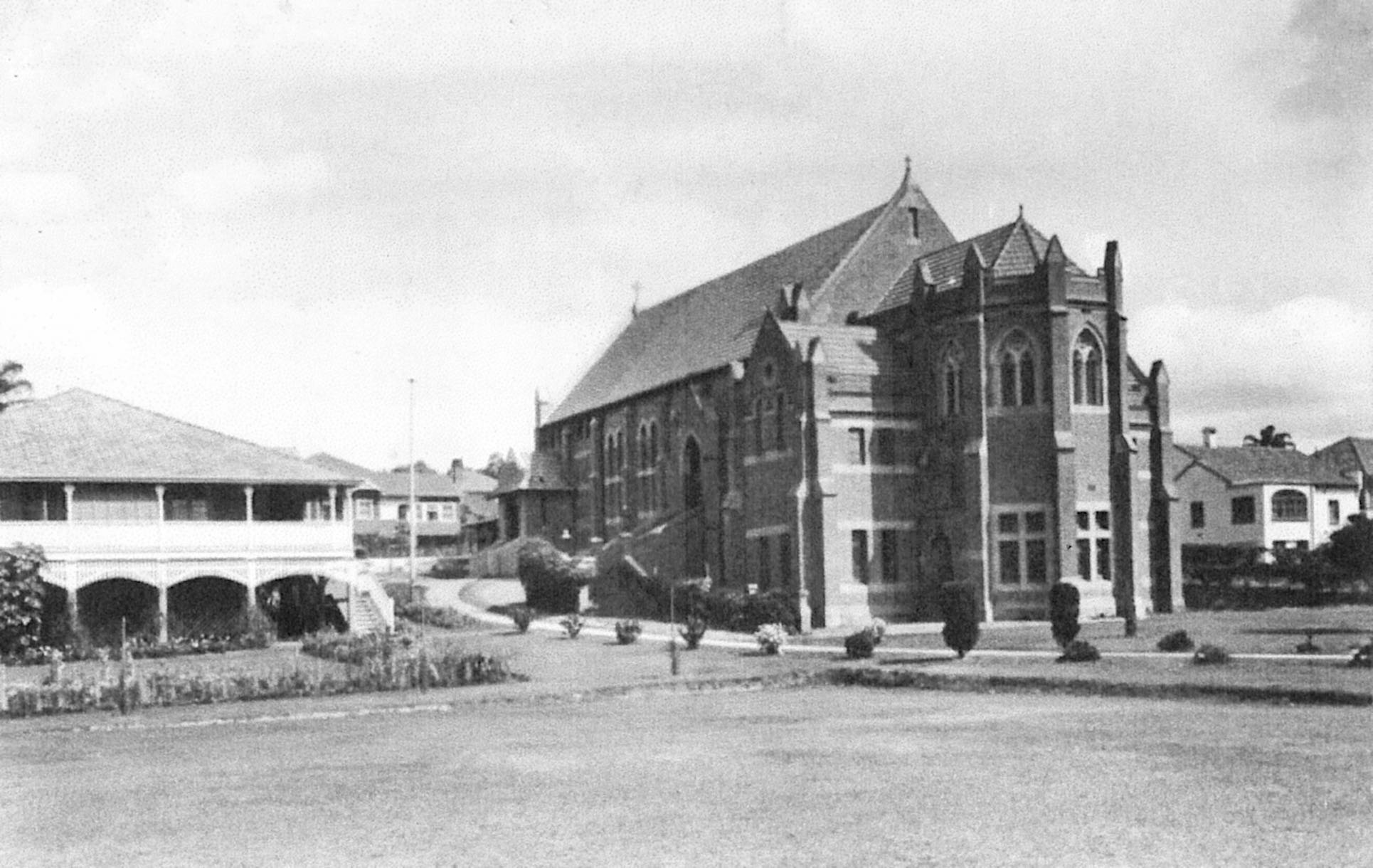
HISTORY
Serving our community since 1895
The site of the present St Augustine's Anglican Church stands upon land which was once part of an eight acre pineapple plantation established by William John Farmer Cooksley in 1875. Two allotments of this land were purchased in 1895 by the Anglican congregation and a small wooden church was constructed. This church exemplified a wider drive by Bishop Webber to construct more Anglican churches and was dedicated by him in 1896. Prior to the construction of this church, most Hamilton Anglicans travelled to St John's Pro-Cathedral in William Street, or crossed the river to attend St John the Baptist Church at Bulimba. In 1911, following the Church's purchase of an adjoining one acre site between Charlton Street and Racecourse Road, the wooden church was moved to the south-east corner of the new site. The district of Hamilton was separated from St Andrew's parish, Lutwyche and declared a Parochial District in July 1912. A substantial vicarage, which still stands today, was completed in September, 1918.
The first St Augustine’s Church, Hamilton, in 1900
As a result of the rapid growth of the Hamilton congregation it was decided that a new permanent brick church and parish hall be built as a thanks-offering for victory in the First World War. The present red brick, rectangular church, erected due east and west of the site, was completed in 1920 at a cost of £6,392 including seats. The first service was held on 17 October of that year. Reverend J.B. Armstrong, who oversaw the building work, "laid the first brick and eventually climbed up on the roof and put on the last tile".
Soon after the arrival in the parish of Canon F.B.C. Birch in November 1934, it was necessary to extend the church to accommodate the ever-increasing congregation. As a result, the Nave was lengthened and a Baptistry, Gallery and a new porch entrance on the south-western side were added at a cost of £2,300. On 11 May, 1941 the present Parish Hall, which fronts onto Racecourse Road, was opened by the Governor of Queensland. The first part of the Columbarium was built under the Sanctuary and Chancel at a cost of £265, though it was originally not furnished as a chapel. This was later completed, however by the early 1960s it became evident that the columbarium required extension, which was completed in 1964.
While the main church and hall were constructed not only as a thanks offering, but in memory of the men, mainly army, who perished in the First World War, parishioners, after World War Two, wished to commemorate the efforts of those who served in that war. In 1959, Colonel Dan Evans gifted a new organ to the church as a memorial to Naval and Merchant Navy personnel who lost their lives in the war. A tower, reaching a height of 64 feet was constructed in 1961, and dedicated to the men and women who served in the Second World War. As a tribute to the role of the Air Force, an airman is depicted in the first tower window. The first bell was installed in the tower in 1967.
Fly-over salute, 1960s
The present church is 120 feet by 32 feet and can seat 350 people with an extra fifty places available in the Gallery. The great 'Te Deum' window is a significant feature, bathing the interior of the church in a kaleidoscopic glow of colour throughout the day. All the stained glass in the Church was the work of William Bustard and it is believed that St. Augustine's is the only church to contain a complete set of Bustard's windows.
During the 1970s what was believed to be the oldest bell in Australia, understood to have been first hung in a Romanian Church by the Emperor Constantine in 320 AD, stood in the church grounds. The bell was retrieved from a World War I battleground by Australian sailors and was donated by Captain William Campbell Thomson to St Augustine's to hang as a war memorial. The bell was stolen in 1978. On 10 February 2000, what is believed to be St Augustine’s bell, was recovered in a joint operation between US Customs and Brisbane police.
The bell plaque reads, ‘The Eastern Church Bell, rescued by the Allies in 1918 from a ruined mosque, is here restored to Christian use in memory of the HEROIC DEAD, being the gift of Capt. and Mrs. W. Campbell Thomson’.
(Source https://heritage.brisbane.qld.gov.au/heritage-places/848)






